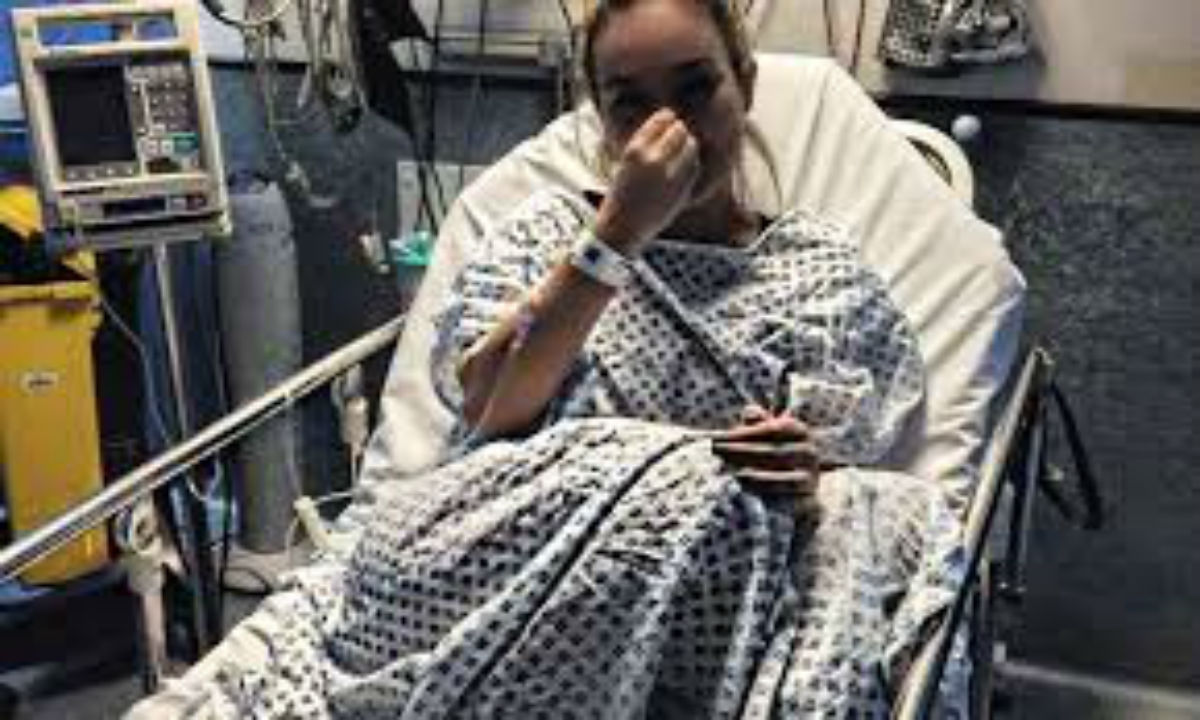Next, to the agonizing pain of giving birth, menstrual period and the hassles that comes with it is the second biggest challenge a woman will have to endure for at least half her life.
“Cramps are normal during PMS and they also occur when your uterus contracts as your period begin. However, some women experience excruciating pain. Also called dysmenorrhea, extremely painful menstruation is likely linked to an underlying medical problem.” says an article from healthline.com.
This case especially holds true with Sinead Smythe, a 20-year-old from Brighton. For years she has been experiencing severe stomach cramps. She had numerous visits to the hospital but it was always dismissed as “normal” period pain. It has been this way since she was 11.
After countless more visits, doctors were convinced she had something more than just regular PMS pain. Putting it into numbers, she visited the A&E or Accident and Emergency (UK’s emergency room) department over 200 times. She also had to endure two operations in the hopes of getting rid or at least minimize the pain brought about by her mysterious condition. Sad to say, all attempts were futile.
Then finally, they caught the culprit. After an earlier misdiagnosis of Pelvic Inflammatory Disease, they for certain found out that it was endometriosis.
“Endometriosis is a disease in which the kind of tissue that normally grows inside the uterus grows outside the uterus. It can grow on the ovaries, fallopian tubes, bowels, or bladder. Rarely, it grows in other parts of the body. Symptoms include pain, usually in the abdomen, lower back, or pelvic areas.” according to medlineplus.gov. This explained the confusion in her previous misdiagnosis.
“The pain can be so crippling that I cannot move from the same position. I can be rolled up in a ball for hours on end.” Sinead described her pain in Daily Mail.
Unfortunately, endometriosis is an incurable condition as of this point in medical science. But according to webmd.com, “treatment can help with pain and infertility. Treatment depends on how severe your symptoms are and whether you want to get pregnant. If you have pain only, hormone therapy to lower your body’s estrogen levels will shrink the implants and may reduce pain.”
Since her diagnosis and after having her own research about her illness, Sinead had come to accept her rare condition and is willing to deal with it for as long as she lives. However, she wished it was diagnosed early on. It could’ve saved her a lot of time and she could’ve avoided the unnecessary anxiety and false accusations of being overly dramatic with her period-pain.
“I would love if people who don’t suffer understood those of us who do aren’t being dramatic – we aren’t having a ‘bad period’.
We are living with an incurable invisible chronic illness which affects almost every single aspect of our lives. It takes the average woman over 7 years to be diagnosed [with endometriosis], which is unbelievable. I really hope and pray this illness becomes more noticed.
If endometriosis was labeled as a disability, it may help us educate the world, and also may help those suffering from the unknown.” Sinead told Bustle.
Sinead posted on Facebook. She also founded an endometriosis support group online to spread more awareness to the public. The road to knowing you have endometriosis is clearly half the battle. Hopefully, Sinead will be successful in her campaign that doctors and researchers take a closer look at the matter. It will definitely save a patient from years-worth of unnecessary hospital bills and public embarrassment.







